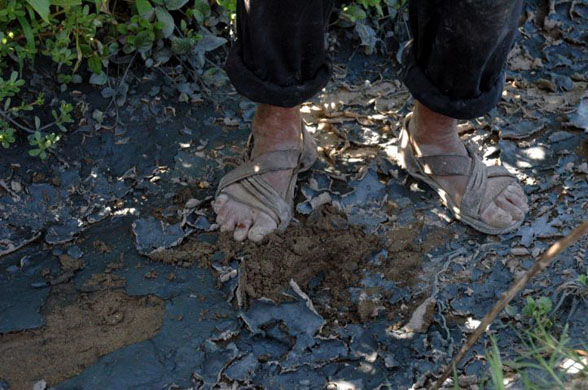 Photo source: www.ala.org
Photo source: www.ala.orgJoseph Stiglitz reviews Naomi Klein's new book in The New York Times:
“The Shock Doctrine” is Klein’s ambitious look at the economic history of the last 50 years and the rise of free-market fundamentalism around the world. “Disaster capitalism,” as she calls it, is a violent system that sometimes requires terror to do its job. Like Pol Pot proclaiming that Cambodia under the Khmer Rouge was in Year Zero, extreme capitalism loves a blank slate, often finding its opening after crises or “shocks.” For example...[t]he 2004 tsunami enabled the government of Sri Lanka to force the fishermen off beachfront property so it could be sold to hotel developers. The destruction of 9/11 allowed George W. Bush to launch a war aimed at producing a free-market Iraq.
...Klein compares radical capitalist economic policy to shock therapy administered by psychiatrists. She interviews Gail Kastner, a victim of covert C.I.A. experiments in interrogation techniques that were carried out by the scientist Ewen Cameron in the 1950s. His idea was to use electroshock therapy to break down patients. Once “complete depatterning” had been achieved, the patients could be reprogrammed. But after breaking down his “patients,” Cameron was never able to build them back up again.
...for Klein the larger lessons are clear: “Countries are shocked — by wars, terror attacks, coups d’état and natural disasters.” Then “they are shocked again — by corporations and politicians who exploit the fear and disorientation of this first shock to push through economic shock therapy.” People who “dare to resist” are shocked for a third time, “by police, soldiers and prison interrogators.”
...Klein offers an account of Milton Friedman — she calls him “the other doctor shock” — and his battle for the hearts and minds of Latin American economists and economies...
She quotes the Chilean economist Orlando Letelier on the “inner harmony” between the terror of the Pinochet regime and its free-market policies. Letelier said that Milton Friedman shared responsibility for the regime’s crimes, rejecting his argument that he was only offering “technical” advice. Letelier was killed in 1976 by a car bomb planted in Washington by Pinochet’s secret police.
One of the world’s most famous antiglobalization activists and the author of the best seller “No Logo: Taking Aim at the Brand Bullies,” Klein provides a rich description of the political machinations required to force unsavory economic policies on resisting countries, and of the human toll. She paints a disturbing portrait of hubris, not only on the part of Friedman but also of those who adopted his doctrines, sometimes to pursue more corporatist objectives. It is striking to be reminded how many of the people involved in the Iraq war were involved earlier in other shameful episodes in United States foreign policy history. She draws a clear line from the torture in Latin America in the 1970s to that at Abu Ghraib and Guantánamo Bay.
Klein is not an academic and cannot be judged as one. There are many places in her book where she oversimplifies. But Friedman and the other shock therapists were also guilty of oversimplification, basing their belief in the perfection of market economies on models that assumed perfect information, perfect competition, perfect risk markets. Indeed, the case against these policies is even stronger than the one Klein makes. They were never based on solid empirical and theoretical foundations, and even as many of these policies were being pushed, academic economists were explaining the limitations of markets — for instance, whenever information is imperfect, which is to say always.





